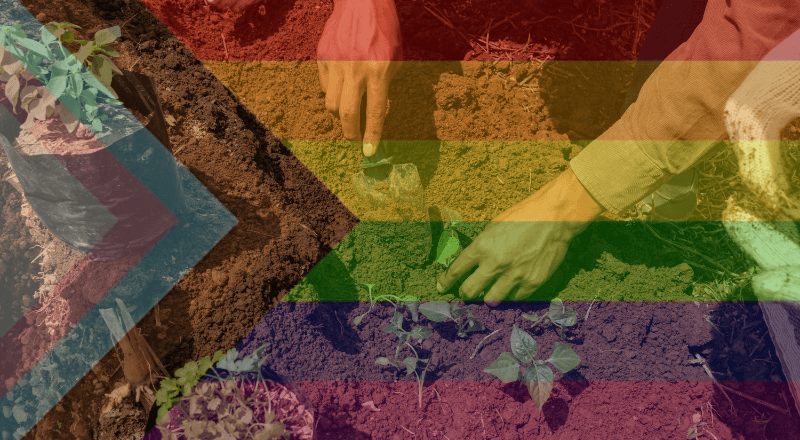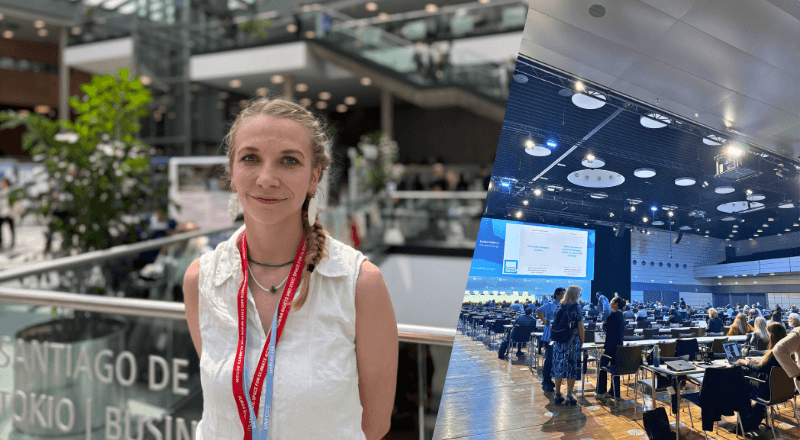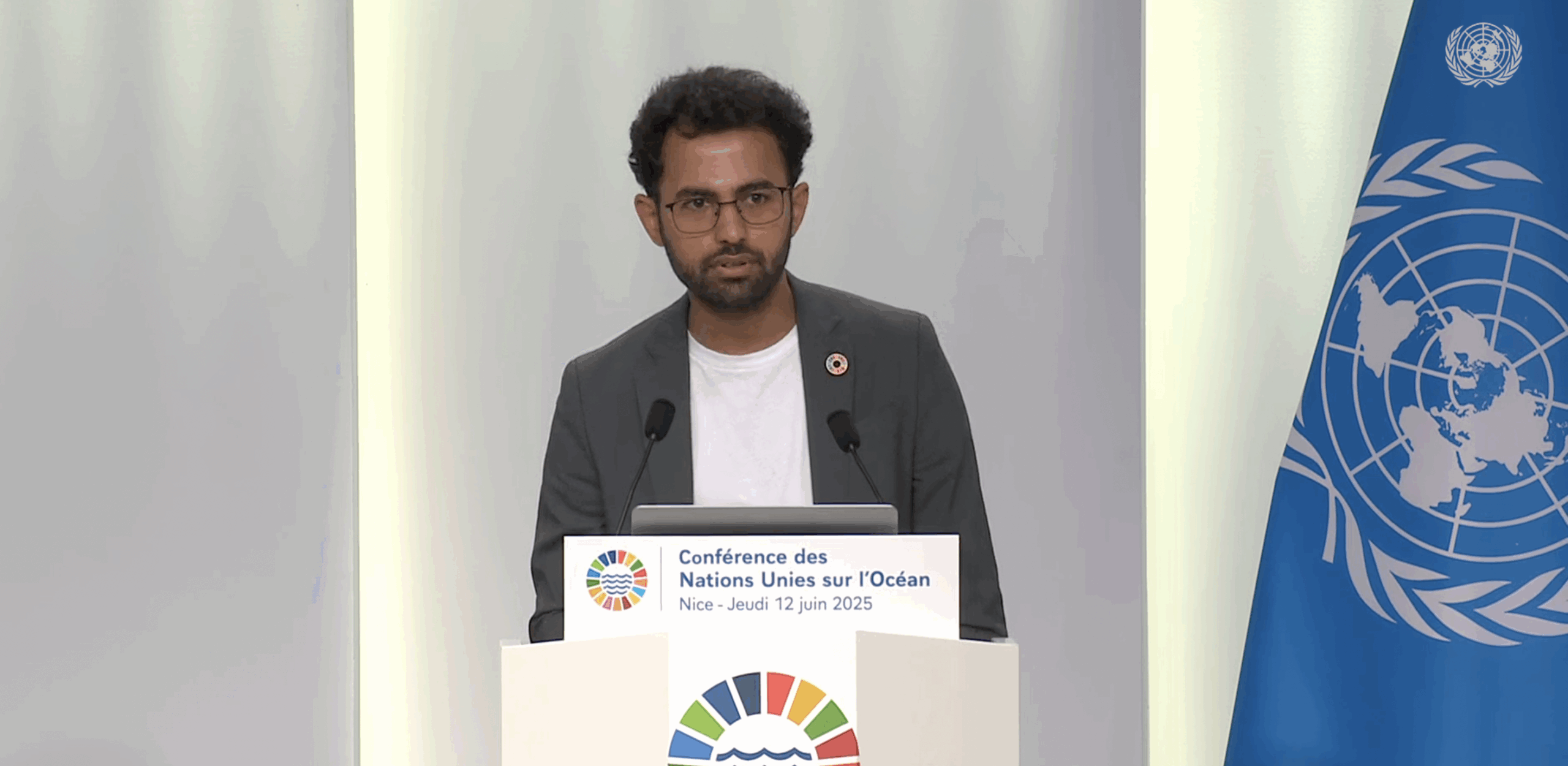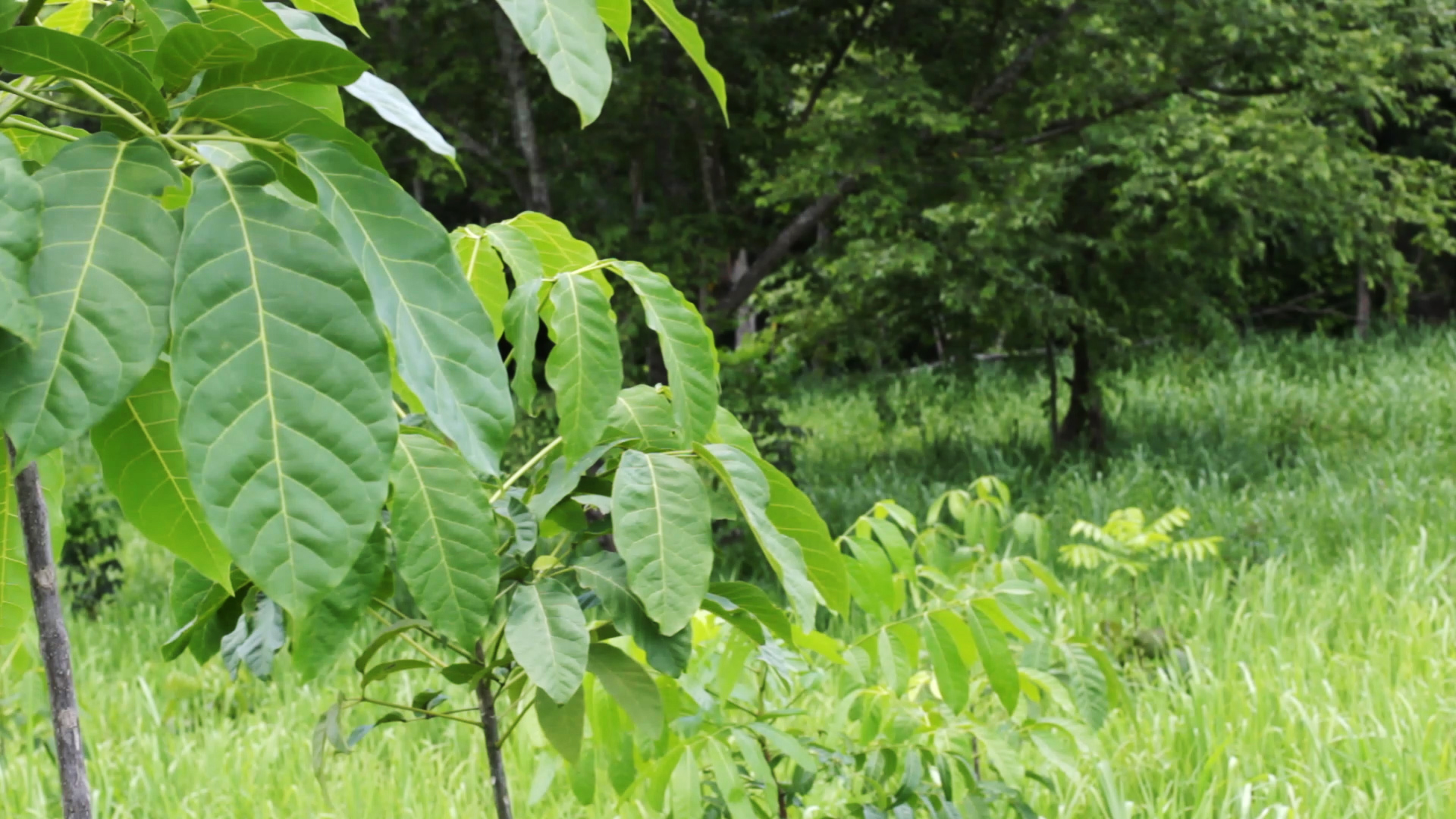
Since man has inhabited the earth, half of all trees have been lost. A new study, published on July 5th, in the journal Science, now reveals: the most effective solution to the climate crisis is the restoration of the Earth`s forests. These new forests could absorb as much as two thirds of man-made carbon dioxide emissions as a result.
What effects will reforestation have on the earth? And where could new trees grow? And how much carbon could they store? The Crowther-Lab study answers these questions for the first time based on actual scientific data. At the heart of this study is a global map, developed by the scientists themselves, showing the reforestation potential.
Their result: an area the size of the USA could be reforested. That’s 0.9 billion hectares.
If we make use of this potential, the trees could store up to 752 billion tons of carbon dioxide as soon as they are fully grown. That is equivalent to two thirds of man-made carbon emissions to date and also two thirds of the remaining carbon budget in order not to exceed the 2°C limit, as calculated by the IPCC.
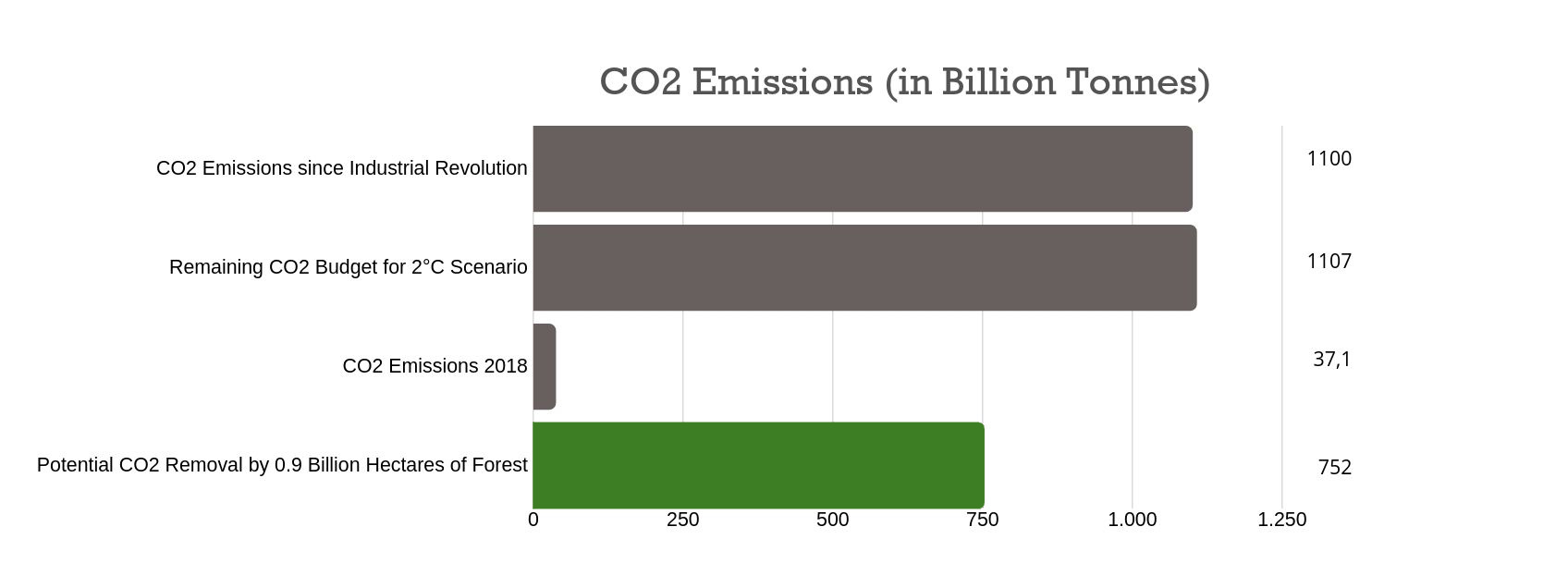
Planting trees now and reducing CO2 emissions
Prof. Tom Crowther, founder of the Crowther Lab and co-author of the study, says: „We all knew restoring forests could play a part in tackling climate change, but we had no scientific data showing the scale of this impact. Our study clearly shows that forest restoration is the best climate change solution available today and it provides grounded evidence to justify investment. However, it will take decades for new forests to mature and achieve this potential. For this reason, it is absolutely vital that we begin reforestation immediately, protect existing forests, pursue other climate solutions and stop the burning of fossil fuels.”
Plant-for-the-Planet founder Felix Finkbeiner is pleased to have the backing of the researchers. Felix is doing his doctorate as a member of Tom Crowther's team and is currently conducting intensive research into reforestation as one of several solutions to the climate crisis. "Of course, this study is incredibly important for us. It shows what a great challenge we are facing," says Felix.
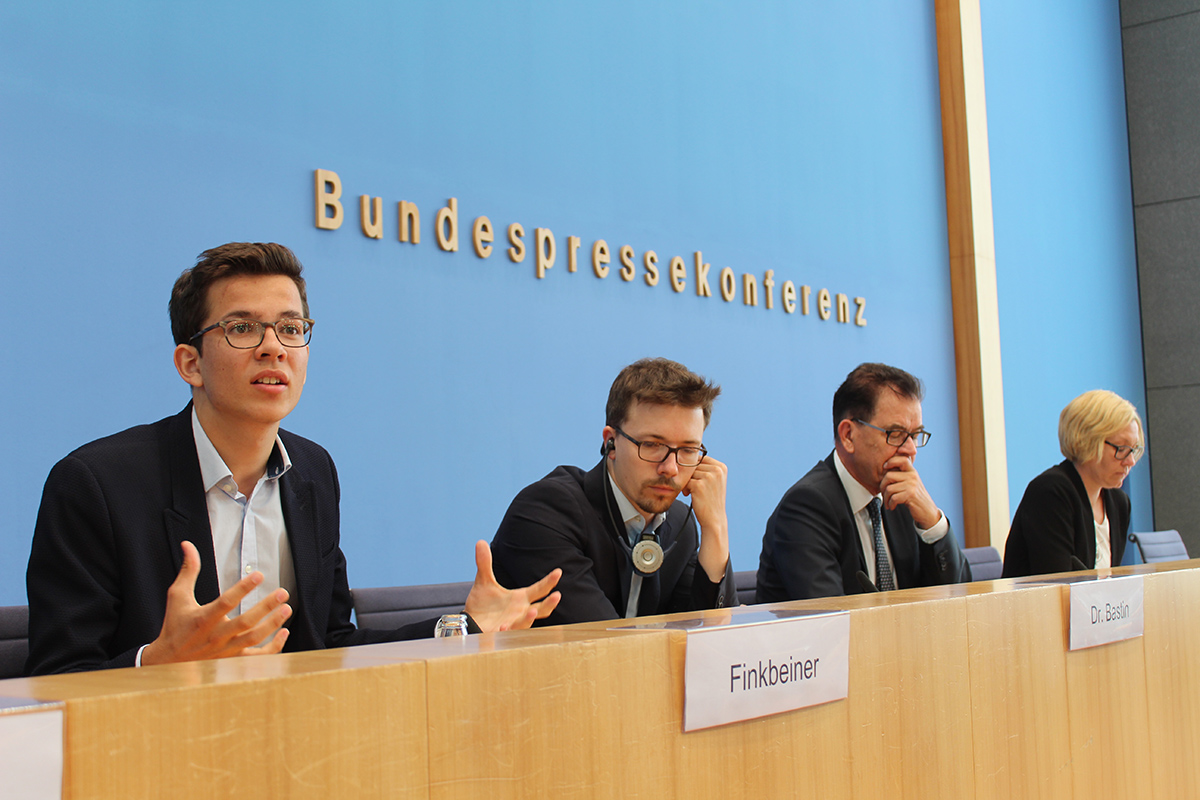
According to the Intergovernmental Panel on Climate Change (IPCC), an additional billion hectares of forest is estimated to be needed to limit global warming to 1.5°C. The new Crowther Lab study shows for the first time that this can be achieved.
On 1.8 billion hectares of land in areas with low human activity, not needed for housing, business or agriculture, could be forested. Of course, the forests that would grow on will not be uniformly dense everywhere. Thus the researchers come to a total of 0.9 billion hectares of dense forest as reforestation potential. They have excluded areas with natural grasslands or wetlands. In their calculations, they consider degraded ecosystems that can naturally support forests.
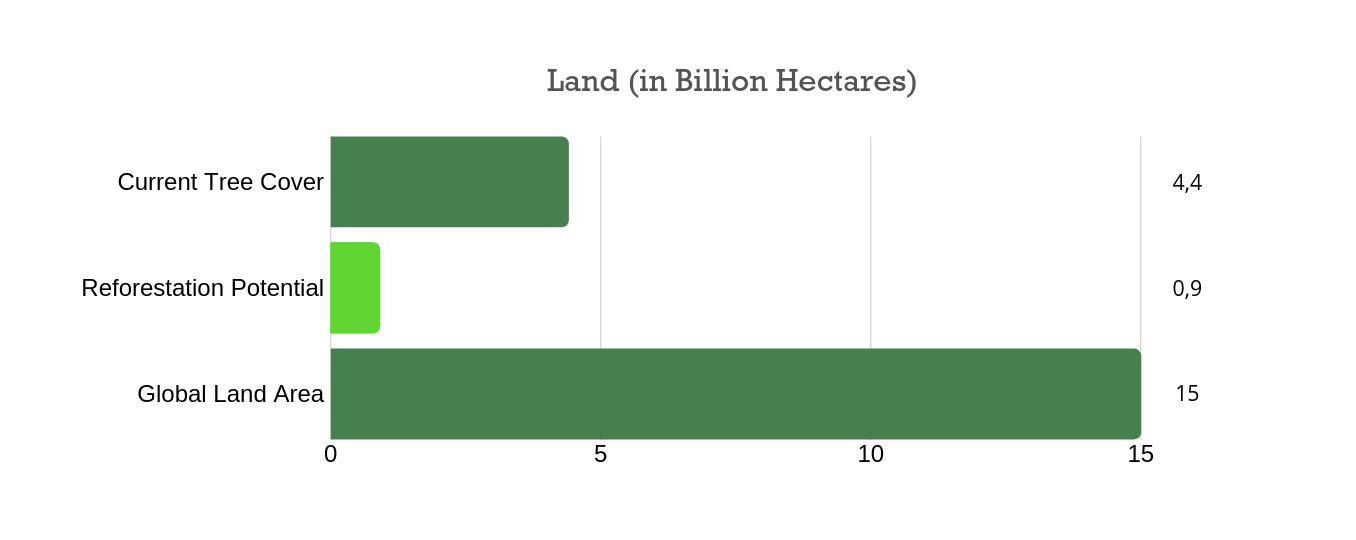
Prof. Tom Crowther explains: "Although government action is essential to make the most of this opportunity, planting trees is a climate solution we can all get involved in and make a tangible impact. You can grow trees yourself, donate to tree planting organizations or just invest your money responsibly in businesses which are taking action on climate change. "
How Plant-for-the-Planet inspired researchers
Tom Crowther has dedicated himself to the question of how many trees we can plant since a Climate Justice Ambassador inspired him to do so. The whole thing came about after Felix spoke at the United Nations. He announced at the time that we wanted to plant a trillion trees, 1,000 billion. Everyone asked themselves: "Whoops, is that possible? How many trees are there at all?” We were surprised that no scientist could answer that question. At that time Gregor Hintler studied at Yale University. He had supported Felix when he was still at school in Germany. So Gregor asked around at the University: "Can anybody "count" the trees for us?” Nobody wanted to – until Gregor asked his soccer buddy Tom Crowther. He and his team at Yale then researched how many trees there were all over the world. And as you can see: The question hasn't let him go since then.
Anyone who wants to plant trees can do so simply by making a donation or – as a company – becoming climate neutral.

